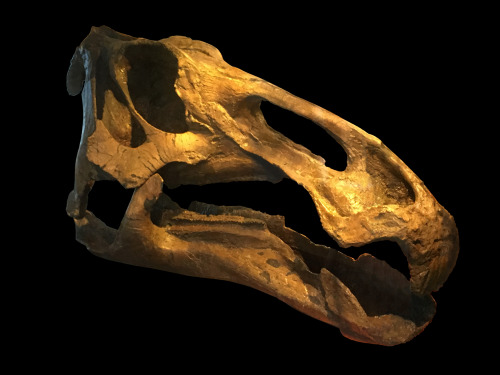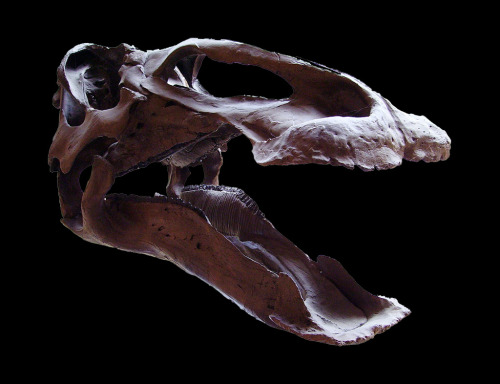thedoodlingdino: Happy #Fossil Friday! A few weeks ago at the LA County Natural History Museum, I sn
thedoodlingdino:Happy #Fossil Friday!A few weeks ago at the LA County Natural History Museum, I snapped a shot of one of the most beautiful specimens I have ever seen—the Edmontosaurus skull up top. “But Josh,” you ask, “Why that specimen instead of the one below? It’s got like half of its beak broken off!” To which I answer, “Exactly.” The skull on top has preserved intact a large portion of the keratinous beak that would have covered its bones in life. Beaks deteriorate faster than bone, and are only preserved in extremely rare conditions; only a handfull have ever been found. You’ll notice that the Oxford skull beneath (credit), while a beautiful skull in its own right, has a much slimmer beak. This is because the keratin beak sheath was completely lost to rot and deterioration, leaving only the supporting bone beneath. It changes the shape of the mouth quite a bit, doesn’t it? As a paleo-artist I get excited by specimens like the half-beaked Edmontosaurus because soft tissue preservation offers a rare window into what the animal would have looked like before it was skeletonized by fossilization, as a living, breathing creature. Some of these glimpses are surprising—such as feathered fossils of meat-eating dinosaurs in China, or another Edmontosaurus fossil that shows it had a soft crest on top of its head. Finds like these change the way we portray prehistoric creatures in art, and sharpen the images of the animals held in our imaginations. -- source link
Tumblr Blog : thedoodlingdino.tumblr.com
#fossil#fossilfriday#geology#edmontosaurus#museum#skull#natural history

